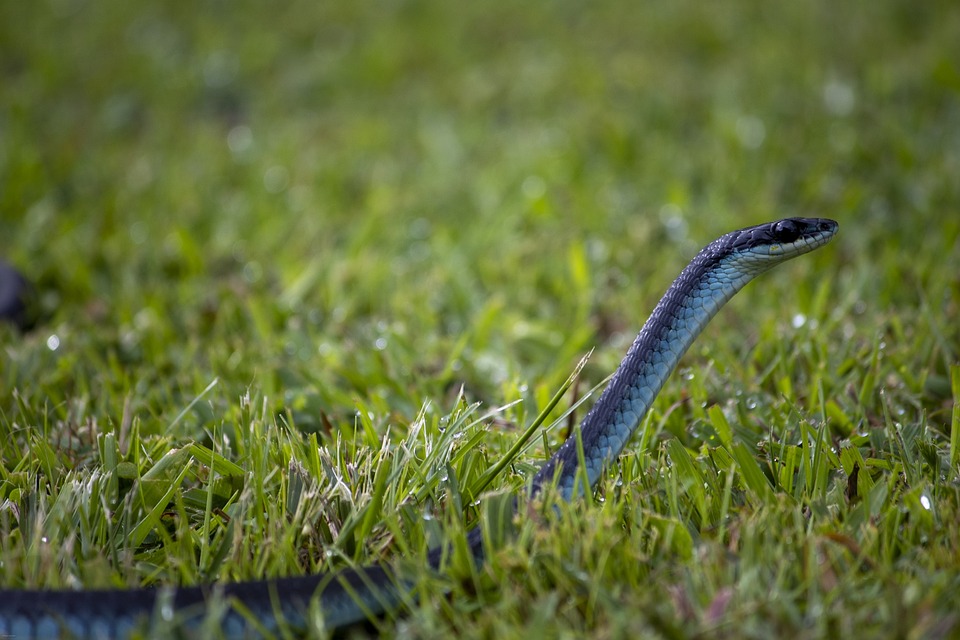The venomous cottonmouth, also known as the water moccasin, is a dangerous snake found primarily in the southeastern United States. With its potent venom and aggressive behavior, it’s crucial for those living in or visiting its natural habitat to know how to identify and avoid this deadly reptile. In this guide, you’ll find information about its appearance, habitat, behavior, and tips on how to stay safe.
Appearance: Recognizing a Cottonmouth Snake
The cottonmouth is a large, heavy-bodied snake, typically measuring 2-4 feet in length. It sports a triangular head and a thick, powerful body that tapers towards the tail. Its most distinguishing feature is its wide, white mouth – giving it the name “cottonmouth.” When threatened, this snake will frequently open its mouth, displaying the bright white lining as a warning.
Their coloration can vary significantly, from dark brown or olive green to almost entirely black. They often exhibit crossbands, though these can fade in older individuals. A key identifying feature is the vertical line through the eye, bordered by a lighter stripe on top and bottom.
Habitat: Where Cottonmouths Live
Cottonmouth snakes prefer aquatic or semi-aquatic environments, such as swamps, marshes, and the edges of lakes and rivers. They can also be found in more terrestrial environments like floodplain forests and fields. It’s essential to exercise caution when exploring any of these habitats, as cottonmouths are known to be extremely territorial and may strike if they feel threatened.
Behavior: How Cottonmouths Act
Cottonmouth snakes are primarily active during the day; however, they may switch to a more nocturnal lifestyle during hot summer days. They are primarily solitary but can sometimes be found basking in groups. These snakes are excellent swimmers and can remain submerged for long periods. They are also known to climb trees and bushes to pursue prey or find shelter.
While cottonmouths are notorious for their aggressive behavior, it’s important to note that they are not always dangerous. These snakes typically strike when cornered or provoked, so maintaining a safe distance and not disturbing them is key to avoiding an unpleasant encounter.
Staying Safe: Tips for Avoiding Cottonmouth Incidents
When venturing into an area where cottonmouths may be present, follow these safety tips:
- Wear closed-toed shoes and long pants to protect your legs.
- Stick to well-trodden paths and avoid tall grass, underbrush, and piles of leaves.
- Always be cautious when stepping over logs or rocks, as snakes may be lurking underneath.
- Never attempt to handle or kill a snake, as this significantly increases your risk of being bitten.
- If you come across a cottonmouth, back away slowly to give it space – do not panic or make sudden movements.
- Learn how to identify a cottonmouth’s key features and habitats, so you can avoid accidentally stumbling onto one.
Conclusion
While the venomous cottonmouth is a dangerous snake, understanding its appearance, habitat, and behavior can significantly reduce the risk of a potentially harmful encounter. By being cautious and respecting their space, you can better coexist with these fascinating creatures and enjoy the great outdoors safely.
FAQs
What should I do if bitten by a cottonmouth?
If bitten, seek immediate medical attention. Although fatalities from cottonmouth bites are rare, their venom can cause significant tissue damage and other complications if left untreated.
Are there any mimic snakes that look like cottonmouths?
Yes, non-venomous water snakes can look very similar to cottonmouths, but they lack the vertical line through the eye and the distinctive white mouth.
What do cottonmouths eat?
Cottonmouths are carnivorous and feed on a range of prey, including fish, frogs, small mammals, and other snakes.

No responses yet